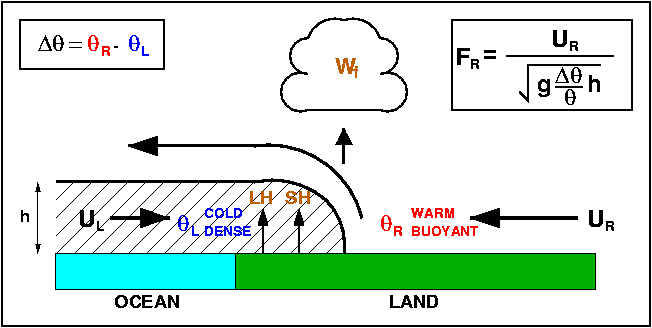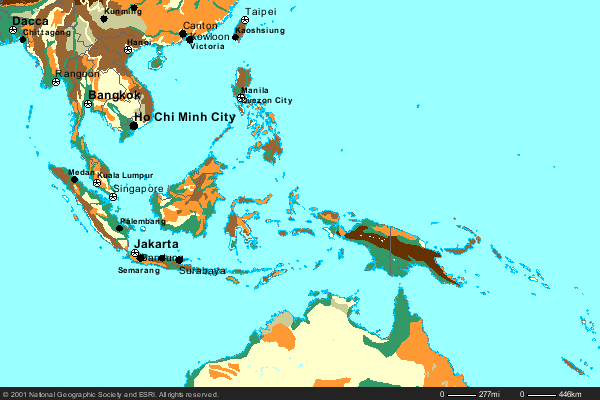
Figure 1. The maritime continent region. Orography elevation increases from green through to dark brown colors.
| INTRODUCTION | ANIMATIONS | MM5 MESOSCALE MODEL | PARAMETRIZATION | RESULTS | SUMMARY |

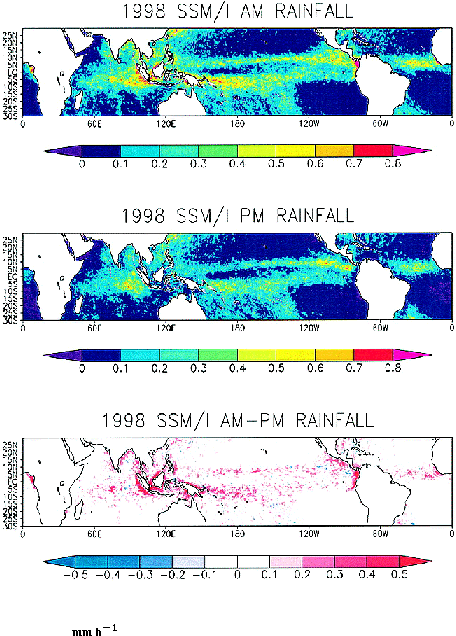
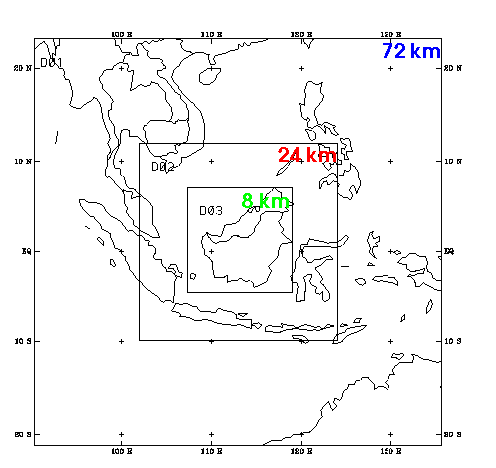
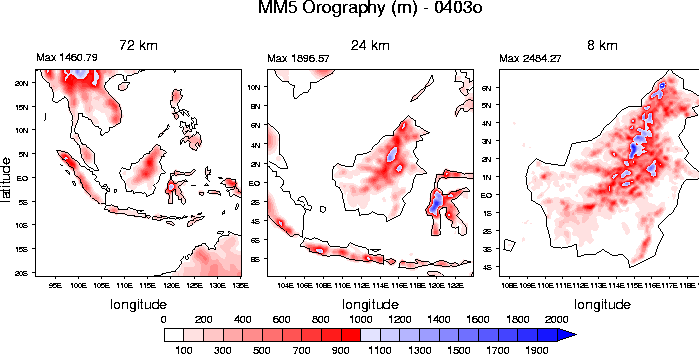
Table 1. Description of 4 convection schemes tested and a summary plot of the distribution of convection shown every three hours for one day of each run. Sea Breeze CirculationWith the KF convection scheme the model captures the observed AM minus PM rainfall differences. Figure 6 and Figure 7 show that both the progression of the sea-breeze in-land and the observed maximum convection over the adjacent oceans are captured at the 24km and 8km resolutions. The main question we wish to address is the enhanced AM minus PM convection seen just off the coast in the model. By examining the differences between the experiments with and without orography (0407 and 0407o respectively) we can determine whether the presence of orography acts to enhance the off-coastal convective diurnal signal amplitude.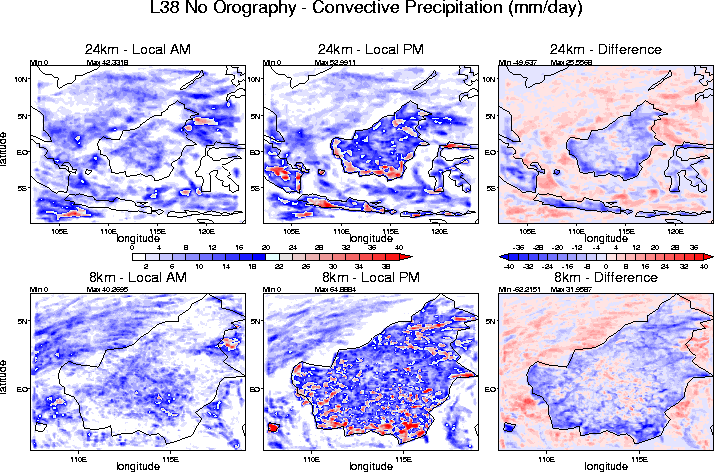
Figure 6. The local AM, local PM and differences in the 4-day average precipitation amounts for the 8-km and 24-km grid domains in experiment 0407. Orography not included. In the absence of orography (Fig 6.) the model produces a clear progression of the sea-breeze from near the coasts during local PM to the centre of Borneo during local AM (this propagation can be seen more clearly in the Animations section). The progression is evident at both 8km and 24km resolutions. The effect this has on the off coastal diurnal cycle amplitude can be seen off the eastern coast of Borneo. Here the AM minus PM difference in rainfall is about 10 mm/day representing a large diurnal amplitude. Therefore, in the absence of orography it appears there is some association between the land and ocean diurnal cycle which leads to the off-coastal enhancement of the diurnal cycle. 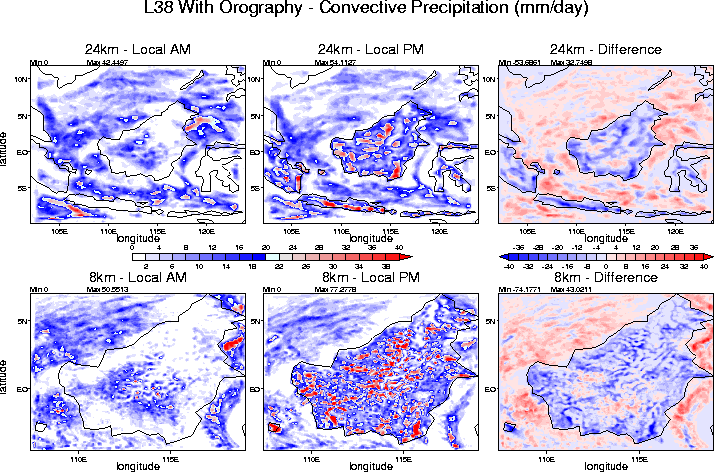
Figure 7. The local AM, local PM and differences in the 4-day average precipitation amounts for the 8-km and 24-km grid domains in experiment 0407o. Orography included. With orography included (Fig. 7) the obvious sea-breeze progression as seen in the absence of orography is interrupted and localised orographic effects have a significant impact on convective organisation. However, the diurnal amplitude of precipitation in our region of interest - just off the East coast of Borneo - is increased above that seen in Fig. 6, particularly at the 8km resolution. Therefore, this suggests that the orography of the islands has a role to play in enhancing the coastal diurnal cycle of precipitation as seen in observations (Fig. 2). Land Breeze Circulation?The effect of included the orography on different aspects of the coastal diurnal cycle can be seen in Fig. 8 and Fig. 9. It highlights a possible role for the orography induced land breeze circulation.The convective precipitation summarises the situation described in Fig. 6 and Fig. 7. Namely that the convection associated with the sea-breeze is stronger and has more coherent propagation in the absence of orography, and the coastal oceanic convective diurnal cycle is greater with orography. The major difference in the surface forcing between the two experiments is that the surface is able to cool much more effectively in the presence of elevated mountains such that just inland from the coast temperatures are up to 5 degrees cooler. After the associated cooling of the lower atmosphere during local dark hours a much stronger land-breeze circulation is established extending much further out from the coast. The low-level off coastal flow associated with the land-breeze opposes the ambient land-ward flow and creates a region of preferential low-level convergence and by implication more prevalent convection. This picture may be complicated by the existence of drainage flow from the mountain regions nut if anything this would add to the net effect of the land-breeze. Therefore it would seem the enhanced sea-breeze circulation can, at least in part, explain the existence of a stronger off-coastal diurnal cycle which is also situated further off the coast than in the absence of orography. 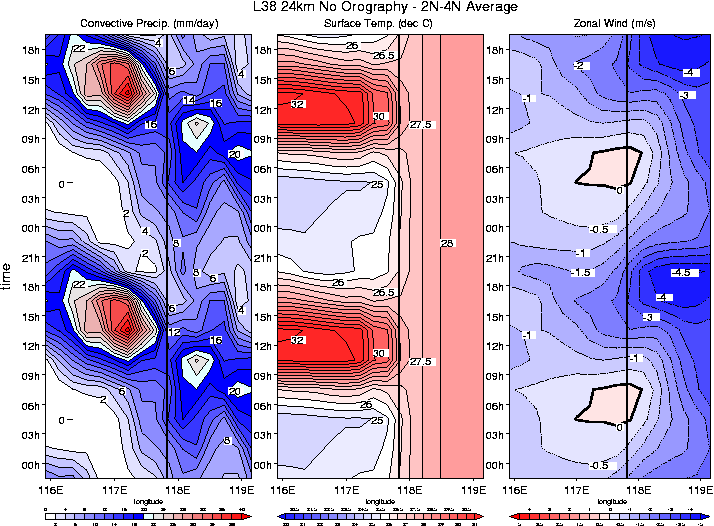 Figure 8. Mean diurnal cycle (repeated for clarity) for experiment 0407 (24km) during 2nd-5th January 1993 averaged between 2N and 4N for convective precipitation, surface temperature and near-surface zonal wind. The solid vertical line indicates the position of the mean coastline with land (Borneo) to the West and ocean to the East. 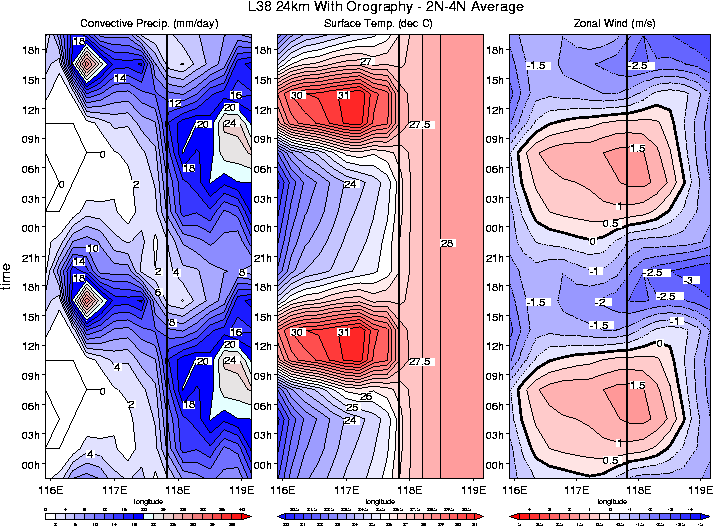 Figure 9. Mean diurnal cycle (repeated for clarity) for experiment 0407o (24km) during 2nd-5th January 1993 averaged between 2N and 4N for convective precipitation, surface temperature and near-surface zonal wind. The solid vertical line indicates the position of the mean coastline with land (Borneo) to the West and ocean to the East. Animations The following section contains animations from preliminary experiments using the MM5 mesoscale model at 8km and 24km resolution. The animation are split into three different types.
|
